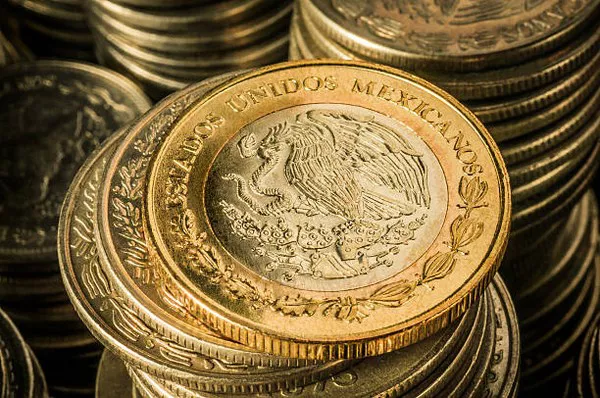Mexico, a country rich in culture, history, and vibrant traditions, is home to a diverse array of currencies that reflect its economic landscape. Among the denominations in circulation, the 1000 peso bill stands out as a symbol of financial value and historical significance. In this article, we delve into the intricacies of Mexico’s currency system, exploring the existence, features, and historical context of the elusive 1000 peso bill.
The Evolution of Mexican Currency
To understand the presence of a 1000 peso bill in Mexico, it is essential to journey through the evolution of the country’s currency. The Mexican peso has a storied history, tracing its roots back to the Spanish colonial period when the real de a ocho served as the dominant currency. Over the centuries, Mexico underwent numerous currency changes, transitioning from the Spanish dollar to the Mexican peso as the nation gained independence in the 19th century.
The modern era of Mexican currency began with the introduction of the peso in 1993, which replaced the Mexican nuevo peso at an exchange rate of 1,000 to 1. Since then, the Bank of Mexico (Banco de México) has issued various denominations, each bearing unique designs and historical figures.
Understanding Denominations
As of the last knowledge update in 2022, Mexican banknotes come in various denominations, ranging from the commonly used 20, 50, 100, 200, 500, and 1000 peso bills. These denominations cater to different transactional needs, from everyday purchases to larger financial transactions.
The 1000 Peso Bill: Fact or Fiction?
One question that often arises is whether Mexico indeed has a 1000 peso bill. The answer is yes. The 1000 peso bill is a valid and widely used denomination in the country’s currency system. It features prominent Mexican figures and historical themes, making it a fascinating piece of monetary art.
Features of the 1000 Peso Bill
The 1000 peso bill, like other Mexican banknotes, boasts intricate design elements that celebrate the nation’s culture and heritage. The front of the bill typically features a portrait of a significant historical figure, while the reverse showcases iconic landmarks, symbols, or events.
The 1000 peso bill features the image of Miguel Hidalgo y Costilla, a key figure in the Mexican War of Independence. Hidalgo’s prominent role in shaping Mexico’s destiny is commemorated on the banknote, emphasizing the historical importance of this denomination.
Security Features
To prevent counterfeiting and ensure the integrity of the currency, the Bank of Mexico incorporates advanced security features into its banknotes. These may include holographic elements, watermarks, raised printing, and intricate patterns that are challenging to replicate.
Historical Context of the 1000 Peso Bill
Miguel Hidalgo y Costilla, the figure depicted on the 1000 peso bill, played a pivotal role in Mexico’s struggle for independence. Born in 1753, Hidalgo was a Catholic priest who, inspired by the ideals of the French and American revolutions, sought to liberate Mexico from Spanish rule.
In the early morning of September 16, 1810, Hidalgo delivered the Grito de Dolores, a call to arms that marked the beginning of the Mexican War of Independence. Hidalgo’s efforts, however, were cut short when he was captured and executed in 1811. Despite this, his legacy endured, and Mexico eventually gained its independence in 1821.
The inclusion of Hidalgo on the 1000 peso bill serves as a tribute to his pivotal role in shaping the nation’s history. The banknote encapsulates not only the value it represents in monetary terms but also the rich tapestry of Mexico’s struggle for freedom.
Circulation and Usage
The 1000 peso bill, along with other denominations, circulates widely within Mexico’s economy. It is accepted for various transactions, from everyday purchases to larger financial dealings. While digital transactions are on the rise globally, physical currency, including the 1000 peso bill, continues to play a crucial role in facilitating trade and commerce.
Collectibility and Cultural Significance
Beyond its utilitarian value, the 1000 peso bill holds cultural and collectible significance. Currency collectors, known as numismatists, may seek out specific denominations for their historical and aesthetic appeal. The 1000 peso bill, featuring Miguel Hidalgo y Costilla, becomes a tangible link to Mexico’s past and a piece of art that reflects the nation’s journey towards independence.
See Also: Mexican Peso (MXN) Currency: History, Symbol, Codes & Denominations
Conclusion
In the vibrant tapestry of Mexico’s currency, the 1000 peso bill stands as a testament to the nation’s history, culture, and struggle for independence. Featuring the image of Miguel Hidalgo y Costilla, a key figure in Mexico’s quest for freedom, the banknote encapsulates the values and aspirations of a nation. As we navigate an increasingly digital world, the tangible presence of the 1000 peso bill serves as a reminder of the enduring importance of physical currency in shaping the economic identity of a country.


